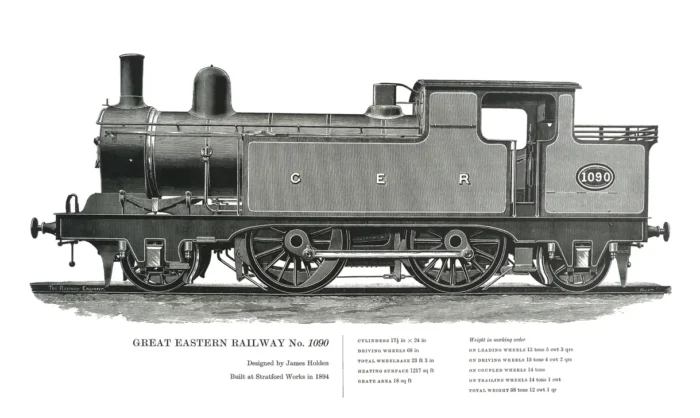Great Eastern Railway 2-4-2T, No.1090
£15.00
The GER Class C32 was a class of fifty 2-4-2 T steam locomotives designed by James Holden and built at Stratford Works between 1892 and 1902 (scroll down for a more detailed Description)
Published by The Railway Engineer in the 19th Century;
Size: c. 43 x 25.5 cm [17 ″ x 10 ″] may vary slightly from printers’ cut years ago
Printed on white white matt cardstock of 146 g/sm2
Print is LARGE size – shipping is the same for 1 to 10 prints (based on largest print size in your order) – see Shipping & Returns
In stock
Description
In 1885 James Holden 1837 – 1925) was appointed Locomotive Superintendent of the Great Eastern Railway, which placed him in control of Stratford works. The GER Class C32 was a class of fifty 2-4-2 T steam locomotives designed by Holden and built by the company’s Stratford Works between 1892 and 1902. They all passed to the London and North Eastern Railway at the 1923 grouping and received the classification F3. These locomotives were fitted with 17 1⁄2-by-24-inch (444 mm × 610 mm) cylinders and 5-foot-8-inch (1.727 m) diameter driving wheels. They were a tank engine version of the T26 class 2-4-0s, albeit with a 3-inch (76 mm) shorter coupled wheelbase. They shared the same type of boiler as that class, as well as the N31 and later Y14 class 0-6-0s. They were intended for use on long-distance stopping services, and so they were all initially fitted with Westinghouse air brake equipment. All had survived to pass to the LNER in 1923; the first retirement started in 1936 when 8090 was withdrawn. Thirty-seven locomotives lasted long enough to be renumbered in the 1946 scheme; fifteen of them became the property of British Railways in 1948, but only three of them lasted long enough to receive their BR number. [Engraved by C. Trent for The Railway Engineer].
Additional information
| Weight | 0.0169 kg |
|---|---|
| Dimensions | 44.5 × 26 cm |





